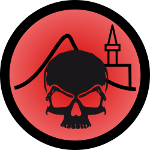Scaling a Bitmap Fill
 LordEntrails
Traveler
LordEntrails
Traveler
My search-fu has failed me, both on the forums on in the TUM and Help.
I've added the checkered tile bitmap from DD3 Color to my map (using a SS4/Schley template) and I'm having trouble scaling the fill.
Regardless of if I check the "Scaled" box or not, the fill changes sizes as I zoom in and out. I'd love to get it to be 2ft squares and stay there. So what am I missing?
I've added the checkered tile bitmap from DD3 Color to my map (using a SS4/Schley template) and I'm having trouble scaling the fill.
Regardless of if I check the "Scaled" box or not, the fill changes sizes as I zoom in and out. I'd love to get it to be 2ft squares and stay there. So what am I missing?


Comments
If this is not the case, I wouldn't mind having a look at the .fcw itself.
Unrelated, but make sure to replace the "c:\apps\profantasy\cc3plus\" part of that file path with an @, otherwise the map won't be very portable.
Thanks once again for helping.
Only thing importing does differently is giving you the ability to generate other resolutions, and to quickly import a complete folder of textures, but otherwise there is no difference to the end result.
This seems to be a tiny rendering glitch, but which is being made that much more visible by the length of size of your filled entity.
If you look at the tiles, they are not really changing size (Not by a large amount at least, as you would see from unscaled fills). Unfortunately, the rendering is quite tricky (Joe can tell you more about it), but basically, what needs to happen is that the artwork (which only have the accuracy of a pixel) needs to be fitted to the CC3+ coordinate system (map units, which are way more precise than a single pixel) and then this have to be rendered back to the screen, reduced in precision to pixels again. This is causing a very small variation on different zoom levels. Normally, it isn't particularly visible, but because that huge area of yours repeats the fill many times over, these minuscule variations are summed up to become quite noticeable down at the bottom.
I am not sure how to best handle it. You can minimize the effect by using smaller areas. This will cause the effect to be more distributed, but it won't be gone.
The effect is also less visible on deep zooms, which means it will also be less of a problem on high resolution exports.
I don't have a perfect solution for you unfortunately, trying to make elements in a fill an exact size is not the strongest point of CC3+ when you need pixel perfection.
In this case I'm not too worried about have an exact size of the fill. I'm more worried about exports at different resolutions will have different appearances. Since I plan to have several exports of this map (poster size full map, low detail full map, and mid-resolution battle maps). Does that change a possible recommended approach?
Also, No reason I can't break the area up into multiple areas if that would help and I can get the fills to match at the interfaces. Would square areas be better?
Is their a formula for figuring out the scale factor?
For instance, if I want to fill a 40x40 (ft) area, how does the scale factor figure in and does the sample width impact?
If you want to fill that 40 by 40 area with exactly one copy of the texture, then the scale factor would be 40 by 40 too, but normally, the size of the area you wish to fill is irrelevant for the scale factor. Also, sample with is just the width of that little preview window in the fill dialog, and has no impact on the fill in the map at all.
I'll have to see how this exports at various resolutions. Thanks again.